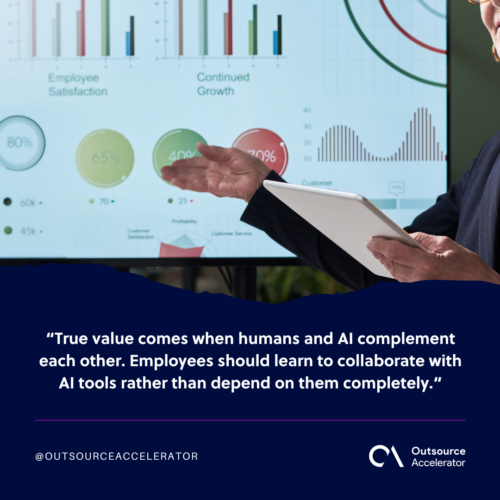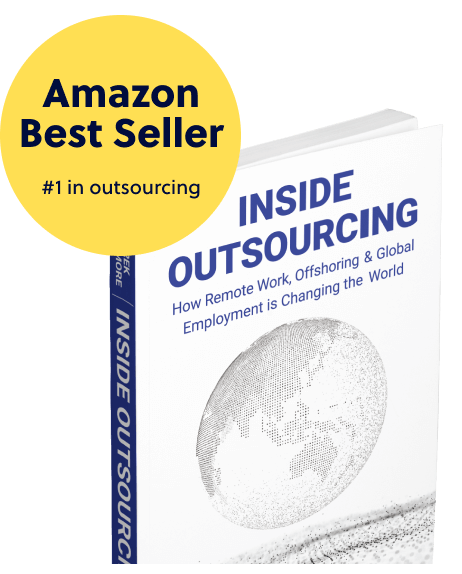Workslop: Creating unnecessary extra work, leading to a million-dollar problem

Many businesses across various industries are adopting artificial intelligence to streamline daily tasks and enhance productivity. Yet, instead of reducing workloads, AI sometimes adds complexity and extra steps that slow down operations.
This growing problem, known as workslop, creates unnecessary tasks that drain time and resources. This article explores how workslop is impacting organizations and contributing to substantial financial losses.
The goal is to highlight why addressing this issue is crucial for companies wanting to get real value from their AI investments.
AI workslop explained
AI workslop refers to content produced by artificial intelligence that appears polished but lacks real value or depth. It often takes the form of sleek presentations, neatly formatted reports, or code snippets that miss essential context.
Instead of improving efficiency, AI workslop create extra work for teams who must refine, verify, or rebuild what the system generated. While some professionals use AI to enhance solid work, others rely on it to produce incomplete or misleading material.
This misplaced dependence gives the illusion of productivity while shifting the burden of problem-solving and critical thinking to others.
Having a good grasp of workslop can help organizations recognize when technology supports genuine progress and when it merely adds another layer of unproductive effort.

Statistics on how workslop impact businesses
Artificial intelligence was meant to make work faster and smarter, yet for many companies, it is quietly creating the opposite effect. AI-generated content that appears impressive but lacks genuine value is costing businesses both time and money.
These recent studies and real-world cases outlined below reveal how serious this hidden problem has become:
Deloitte’s costly AI mistake
Consulting giant Deloitte Australia had to issue a public apology after delivering a government report worth A$440,000 filled with AI-generated errors.
The incident damaged the firm’s credibility and highlighted how unverified AI content can undermine trust and financial integrity in professional settings.
Lack of measurable ROI in AI investments
According to a MIT Media Lab report, 95% of organizations see no measurable return on their AI investments. The study found that most AI-generated outputs “look good but lack the substance to meaningfully advance a given task.”
This statistic exposes how much corporate spending goes toward technology that often adds aesthetic value instead of practical results.
The cost of fixing workslop
Research from BetterUp and Stanford Social Media Lab revealed that 40% of U.S. desk workers encounter AI workslop.
Each incident takes an average of two hours to resolve, resulting in about US$9 million (A$13.8 million) in lost productivity every year for a 10,000-person company. These numbers show how seemingly small inefficiencies accumulate into major financial losses.
Global over-reliance on AI
A survey by The Conversation, covering 32,352 workers across 47 countries, found widespread complacency and covert AI use in workplaces. This over-reliance promotes shortcuts and increases the risk of low-quality outputs.
The data paints a clear picture: AI workslop is not just an inconvenience; it’s a growing business problem draining time, money, and trust worldwide.

What businesses can do to mitigate workslop
AI tools have become essential in modern workplaces, but their misuse often results in content that appears productive but actually creates more work for others.
To address this growing challenge, businesses must focus on strategy, governance, and education to make artificial intelligence genuinely useful rather than disruptive:
Develop a clear AI strategy
Every organization needs a defined AI strategy that identifies where automation adds the most value. Leaders should clarify goals, assign accountability, and track performance outcomes.
A structured approach minimizes misuse, reduces rework, and keeps AI aligned with real business objectives rather than surface-level output.
Invest in strong governance
Effective governance helps guide employees on how and when to use AI responsibly. Companies should establish practical guardrails that clearly outline situations where AI is beneficial and where human expertise is necessary.
Governance must extend beyond policy; it should influence daily decision-making and promote a culture of thoughtful AI use.
Build AI literacy across teams
Many employees lack the training needed to use AI effectively. Research indicates that AI literacy enhances judgment and reduces errors.
Businesses should invest in workshops and ongoing learning programs that teach workers how to verify AI outputs, identify inaccuracies, and apply tools selectively. Educated users are less likely to create workslop and more likely to produce meaningful results.
Promote human-AI collaboration
True value comes when humans and AI complement each other. Employees should learn to collaborate with AI tools rather than depend on them completely. This balance allows AI to handle repetitive tasks while humans focus on analysis, creativity, and decision-making.
Reducing workslop requires intentional leadership, structured training, and a culture that prioritizes thoughtful AI engagement. Companies that take these steps will transform AI from a source of frustration into a driver of efficiency and innovation.

Workslop FAQs
Many professionals still have questions about how workslop affects productivity and workplace efficiency. Here are some key answers that clarify this growing issue.
Is workslop always caused by AI?
Not always. While AI often contributes to it, workslop can also arise when employees overuse templates, automation, or shortcuts without understanding the task’s real purpose.
How can managers spot workslop early?
Managers can look for signs such as polished but unhelpful reports, repetitive edits, or projects that appear complete yet lack actionable insights. Regular reviews and open feedback help identify it quickly.
Can small businesses experience workslop too?
Yes. Even small teams using AI for writing, data, or design can face workslop when outputs replace critical thinking or context.
Does workslop affect employee morale?
Absolutely. Reworking low-quality content can increase frustration and drain motivation, making employees feel that their time and skills are undervalued.
Understanding workslop helps businesses identify hidden inefficiencies and take action to prevent costly consequences, turning AI from a burden back into a powerful tool for growth and improvement.







 Independent
Independent




